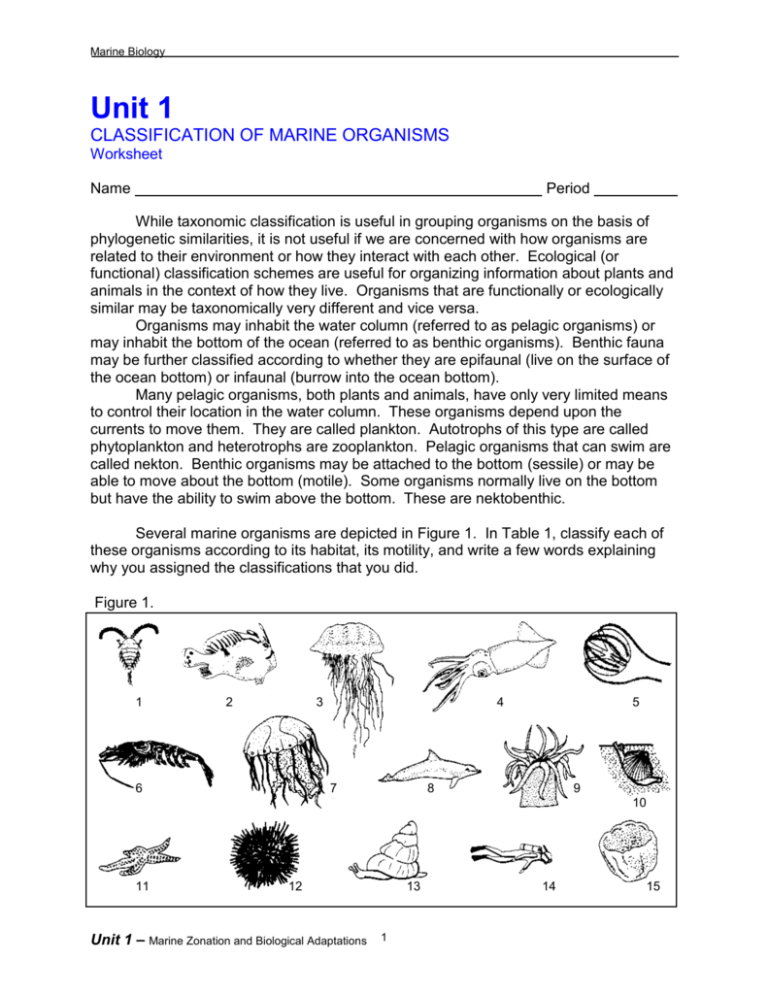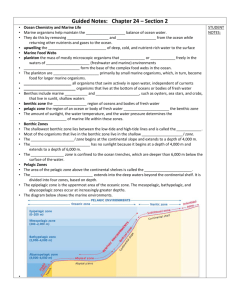Unit 1
advertisement

Marine Biology Unit 1 CLASSIFICATION OF MARINE ORGANISMS Worksheet Name Period While taxonomic classification is useful in grouping organisms on the basis of phylogenetic similarities, it is not useful if we are concerned with how organisms are related to their environment or how they interact with each other. Ecological (or functional) classification schemes are useful for organizing information about plants and animals in the context of how they live. Organisms that are functionally or ecologically similar may be taxonomically very different and vice versa. Organisms may inhabit the water column (referred to as pelagic organisms) or may inhabit the bottom of the ocean (referred to as benthic organisms). Benthic fauna may be further classified according to whether they are epifaunal (live on the surface of the ocean bottom) or infaunal (burrow into the ocean bottom). Many pelagic organisms, both plants and animals, have only very limited means to control their location in the water column. These organisms depend upon the currents to move them. They are called plankton. Autotrophs of this type are called phytoplankton and heterotrophs are zooplankton. Pelagic organisms that can swim are called nekton. Benthic organisms may be attached to the bottom (sessile) or may be able to move about the bottom (motile). Some organisms normally live on the bottom but have the ability to swim above the bottom. These are nektobenthic. Several marine organisms are depicted in Figure 1. In Table 1, classify each of these organisms according to its habitat, its motility, and write a few words explaining why you assigned the classifications that you did. Figure 1. 1 2 3 6 4 7 5 8 9 10 11 12 Unit 1 – Marine Zonation and Biological Adaptations 13 1 14 15 Marine Biology Table 1. Picture No. Habitat Motility Explanation 1 2 3 4 5 6 7 8 9 10 11 12 13 14 15 Unit 1 – Marine Zonation and Biological Adaptations 2







